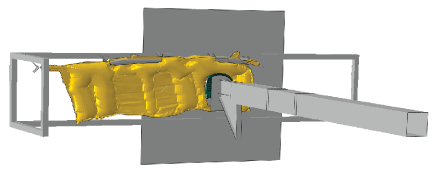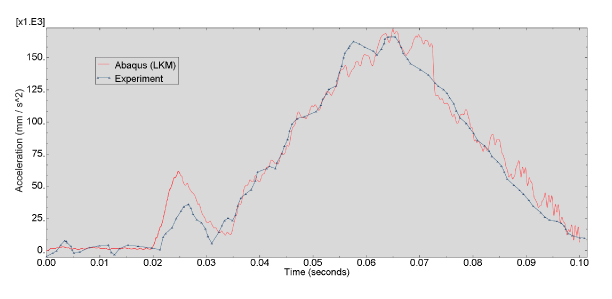Application description
Geometry
The side curtain airbag model is based on the airbag model described in Side curtain airbag impactor test. The geometry of the airbag and the rigid head form are the same as described in that example problem. The inflator gas is modeled using the lumped kinetic molecular (LKM) method. Because the LKM method is able to capture the nonuniformity of pressure in the airbag, only a single fluid cavity spanning the entire airbag is used.






